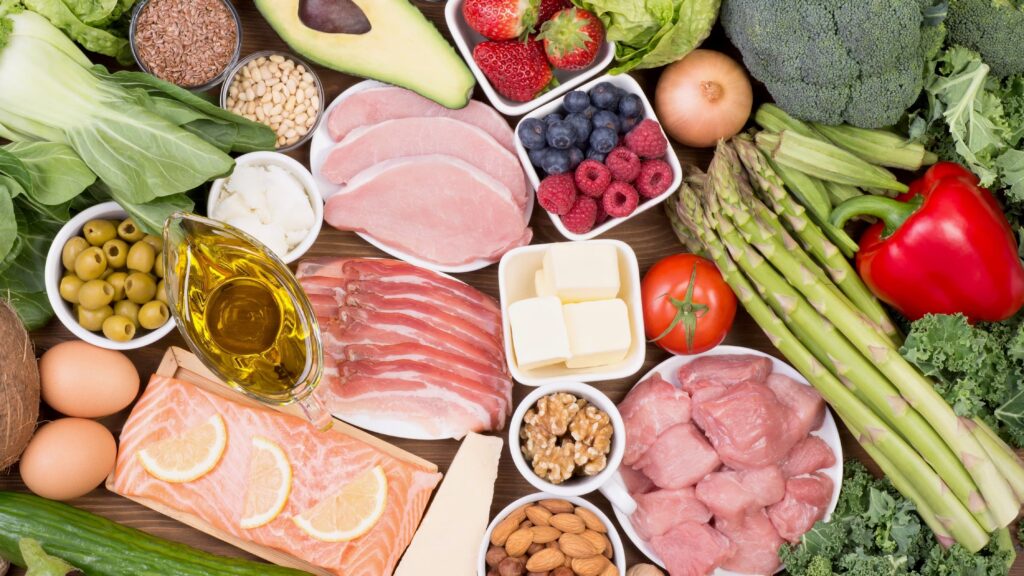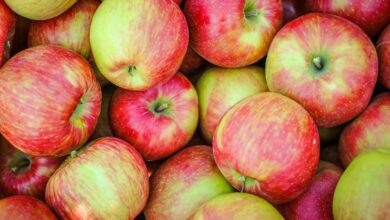Low Carbohydrate Diet Types, Focused and Avoided Foods
What to Eat and What to Avoid
Following a low-carb diet means focusing your meals around specific food groups:
| Eat (Focus Foods) | Avoid (High-Carb Foods) |
| Meat: Beef, chicken, lamb, pork, bacon. | Grains: Bread, pasta, rice, cereal, oatmeal. |
| Fish & Seafood: Salmon, trout, tuna, shrimp. | Sugars: Soda, juice, candy, ice cream, pastries. |
| Eggs: All types. | Starchy Vegetables: Potatoes, corn, sweet potatoes. |
| Natural Fats: Olive oil, butter, avocado oil, coconut oil. | Legumes (in excess): Beans, lentils, chickpeas. |
| Non-Starchy Vegetables: Broccoli, spinach, peppers, cauliflower, kale. | Low-Fat/Diet Products: Often contain added sugar. |
| Dairy: Cheese, full-fat yogurt, heavy cream. | Beer. |
| Nuts & Seeds: Almonds, walnuts, chia seeds. | Most Fruit Juices. |

You should also drink plenty of water. Black coffee and tea are acceptable, but avoid adding sugar.
Different Types of Low-Carbohydrate Diets
The term “low-carb” is a large umbrella. Different diets restrict carbohydrates to varying degrees. Here are three of the most popular and distinct styles:
| Diet Type | Net Carb Range (grams/day) | Focus/Goal |
| Standard Ketogenic Diet (SKD) | 20−50 grams | Entering and maintaining a state of ketosis. Extremely low carb. |
| Atkins Diet (Maintenance Phase) | 50−100 grams | Long-term weight maintenance and healthy eating. Gradual carb reintroduction. |
| Low-Carb, High-Fat (LCHF) | 50−150 grams | Health and sustained energy. Focus on whole, unprocessed foods. Less strict than Keto. |
1. Standard Ketogenic Diet (SKD)
The SKD is the most restrictive. It aims to put the body into ketosis, a metabolic state where fat provides most of the fuel.
| Meal | Example |
| Breakfast | Scrambled eggs cooked in butter with spinach and cheese. |
| Lunch | Large salad with grilled chicken, olive oil dressing, and avocado. |
| Dinner | Salmon fillet baked with asparagus and a side of cauliflower mash. |
Some people experience temporary side effects when starting an extremely low-carb diet, often called the “keto flu”. Symptoms can include headache, fatigue, dizziness, and irritability. These usually occur as the body adjusts to burning fat instead of carbs.
Drinking more water and increasing your salt and potassium intake usually helps manage these symptoms quickly.
2. Atkins Diet (Maintenance Phase)
The Atkins diet has four phases. The Maintenance Phase is a moderate low-carb approach. It allows a wider range of foods than Keto, making it more sustainable for many people.
| Meal | Example |
| Breakfast | Full-fat Greek yogurt with a handful of blueberries and some walnuts. |
| Lunch | Turkey and cheese wrapped in a large lettuce leaf with a side of baby carrots. |
| Dinner | Pork chops with sautéed green beans and a small baked sweet potato. |
3. Low-Carb, High-Fat (LCHF)
The LCHF diet is generally the most flexible. It emphasizes whole, unprocessed foods and healthy fats while reducing sugar and starches. It is less concerned with strict ketosis and more focused on overall health.
| Meal | Example |
| Breakfast | Omelet with mushrooms, onions, and bell peppers. |
| Lunch | Hearty beef chili (without beans) topped with sour cream. |
| Dinner | Steak with a large side of roasted Brussels sprouts and a small glass of red wine. |
Key Benefits
Many people experience following benefits when following a low-carb diet:
Weight Loss: By reducing insulin levels and forcing the body to burn fat, low-carb diets are often very effective for shedding pounds.
Improved Blood Sugar: Cutting down on carbohydrates directly lowers blood glucose and can significantly help people with insulin resistance or type 2 diabetes.
Reduced Appetite: Many find that the higher protein and fat content of these diets keeps them feeling full for longer.
Heart Health Markers: Some studies show improvements in triglycerides and HDL (good) cholesterol levels.
- Low-Carbohydrate Diets
- Nutrition Therapy for Adults With Diabetes or Prediabetes: A Consensus Report
- Effects of low-carbohydrate and low-fat diets: a randomized trial (PubMed)
- A Novel Intervention Including Individualized Nutritional Recommendations Reduces Hemoglobin A1c Level, Medication Use, and Weight in Type 2 Diabetes



